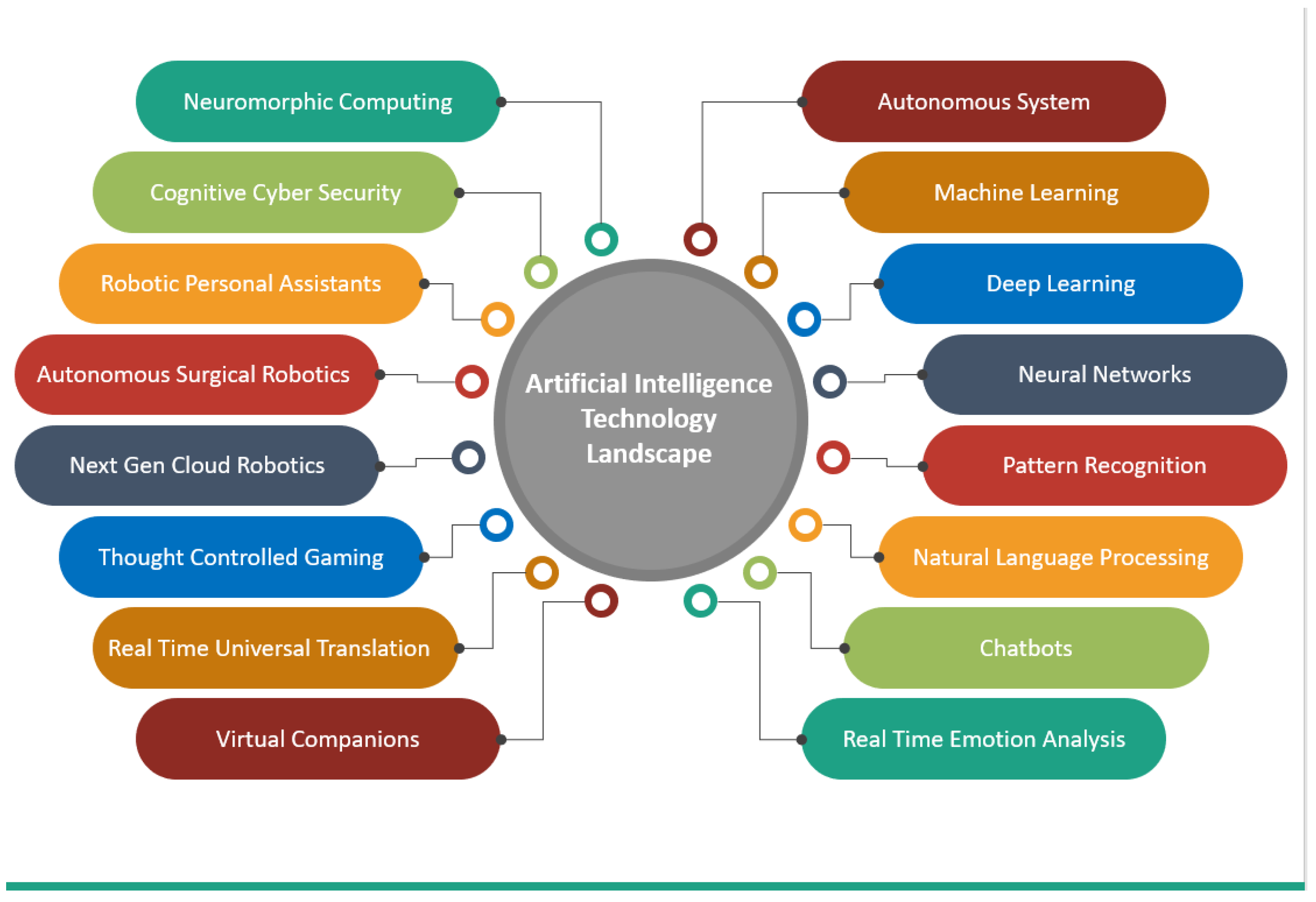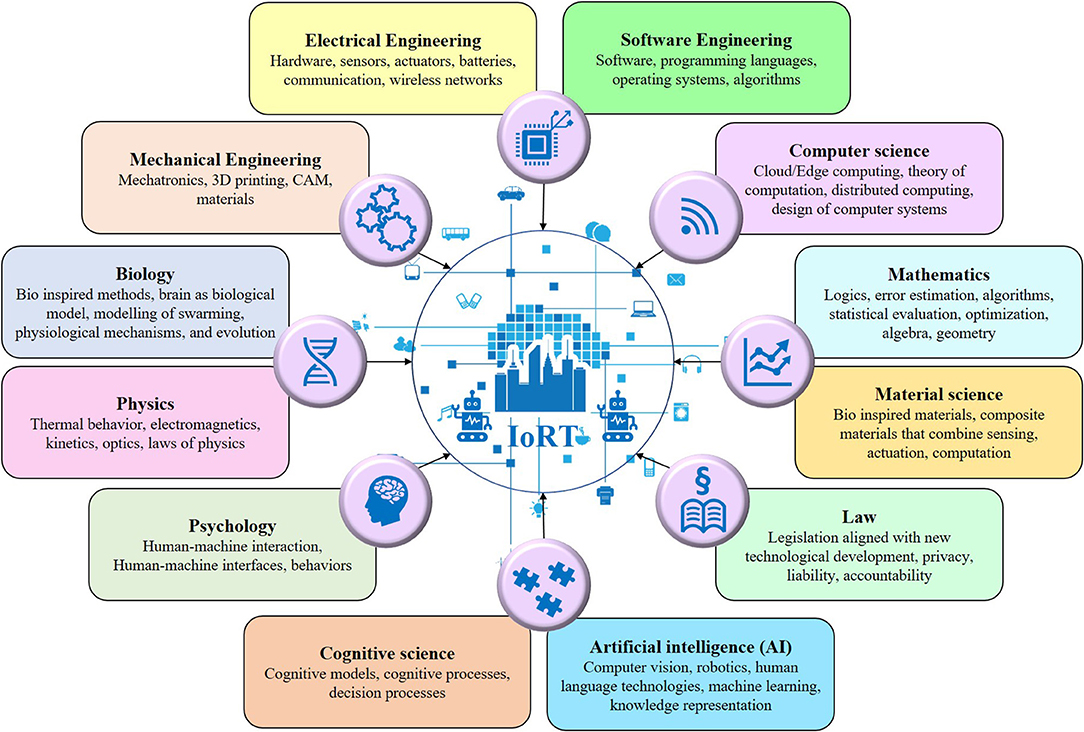AI computer science and robotics technology significantly influence various sectors. They enhance efficiency, innovation, and problem-solving capabilities across industries.
AI and robotics are transforming modern industries. They streamline processes, increase productivity, and drive innovation. From healthcare to manufacturing, AI enhances decision-making and automates repetitive tasks. Robotics, on the other hand, revolutionizes physical tasks, improving precision and reducing human labor.
This synergy between AI and robotics fosters advancements in autonomous systems, smart factories, and intelligent services. As these technologies evolve, they promise unprecedented growth and opportunities, reshaping the future of work and daily life. Embracing AI and robotics is crucial for businesses aiming to stay competitive and innovative in a rapidly changing technological landscape.

Credit: www.mdpi.com
Ai In Computer Science
Artificial Intelligence (AI) has revolutionized computer science. AI drives innovation across industries. AI algorithms solve complex problems. AI in computer science enhances efficiency and accuracy. Let’s explore key areas where AI excels.
Machine Learning Advances
Machine Learning (ML) is a core AI discipline. ML algorithms learn from data. They make predictions or decisions without explicit programming. Recent advances in ML include deep learning and reinforcement learning.
- Deep Learning: Uses neural networks with many layers.
- Reinforcement Learning: Algorithms learn by trial and error.
ML applications are vast. They include image recognition, fraud detection, and personalized recommendations. ML models continuously improve over time, providing better results.
Natural Language Processing
Natural Language Processing (NLP) enables machines to understand human language. NLP bridges the gap between human communication and computer understanding.
NLP tools analyze text data. They extract meaningful insights. NLP improves customer service and user experience.
FieldKey Use CasesMachine LearningImage recognition, fraud detection, personalized recommendationsNatural Language ProcessingText classification, sentiment analysis, language translation, chatbots
Both ML and NLP are transforming computer science. AI technologies continue to evolve. They offer new opportunities for innovation and growth.

Credit: www.frontiersin.org
Robotics Technology
Robotics technology has transformed our world. It involves designing, building, and operating robots. These robots perform tasks that humans find hard or dangerous. Robotics technology has many applications. It is used in healthcare, manufacturing, and space exploration.
Autonomous Systems
Autonomous systems are robots that operate without human control. They use sensors and artificial intelligence. These systems learn from their environment. They make decisions based on data. Autonomous systems are used in self-driving cars and drones. They help in search and rescue missions. These systems reduce human error and increase efficiency.
Human-robot Interaction
Human-robot interaction is how humans and robots communicate. This interaction is crucial for the effective use of robots. It involves designing user-friendly interfaces. It ensures that robots understand human commands. Humans use voice, gestures, and facial expressions to interact with robots. This makes robots more adaptable and useful. Effective human-robot interaction improves performance in various fields.
| Robotics Application | Example |
|---|---|
| Healthcare | Surgical robots |
| Manufacturing | Assembly line robots |
| Space Exploration | Mars rovers |
Key Benefits of Robotics Technology:
- Increases efficiency
- Reduces human error
- Performs dangerous tasks
Impact On Innovation
Artificial Intelligence (AI), Computer Science, and Robotics are driving innovation. They are transforming industries and creating new opportunities. Let’s explore their impact on disruptive technologies and new business models.
Disruptive Technologies
AI and robotics are creating disruptive technologies. These technologies are changing how we live and work. They bring new solutions to old problems.
Examples of disruptive technologies include:
- Self-driving cars: Revolutionizing transportation.
- Smart homes: Enhancing daily life with automation.
- AI healthcare: Improving diagnosis and treatment.
These innovations lead to more efficient systems and better outcomes. AI and robotics make tasks faster and more accurate.
New Business Models
AI and robotics are also creating new business models. These models are changing how companies operate. They offer new ways to deliver products and services.
Key examples of new business models include:
| Business Model | Description |
|---|---|
| Subscription services | Providing ongoing access to products. |
| On-demand services | Offering services when needed. |
| Freemium models | Giving basic services free, with paid upgrades. |
These business models are agile and customer-focused. They leverage AI and robotics to meet changing needs.

Credit: onlinedegrees.sandiego.edu
Economic Implications
The rise of AI, Computer Science, and Robotics Technology significantly impacts the economy. From job market changes to new investment trends, these technologies shape our economic landscape. Let’s explore these economic implications in detail.
Job Market Changes
AI and robotics technology revolutionize the job market. They create new roles while making some roles obsolete.
- Automation increases efficiency but reduces the need for manual labor.
- New jobs emerge in AI development, robotics engineering, and data science.
- Workers need to upskill or reskill to stay relevant.
For example, factory workers might lose jobs to robots. Yet, there will be a demand for robot maintenance technicians.
Investment Trends
Investors are keenly interested in AI and robotics. These technologies promise high returns.
| Sector | Investment ($ Billion) |
|---|---|
| AI Research | 20 |
| Robotics Development | 15 |
| Data Science | 10 |
Startups focusing on AI and robotics attract huge funding. Established companies also invest heavily to stay competitive.
According to recent data, AI research alone sees an investment of $20 billion. This shows the economic potential and investor confidence in these technologies.
The economic implications of AI, Computer Science, and Robotics Technology are vast. They reshape job markets and shift investment trends significantly.
Social And Ethical Considerations
The integration of AI, computer science, and robotics technology into our lives brings numerous benefits. Yet, it also raises significant social and ethical concerns. These issues need careful consideration to ensure technology serves humanity positively.
Privacy Concerns
AI systems often collect vast amounts of data. This data can include personal information. Ensuring data privacy becomes critical. Unauthorized data access can lead to severe consequences. Protecting user data is essential for maintaining trust.
Privacy concerns impact several areas:
- Personal Identifiable Information (PII)
- Health records
- Financial details
Companies must implement strict data protection measures. Transparent data policies are vital. Users should know how their data is used. Data encryption and secure storage help protect privacy.
Bias In AI
AI systems are only as good as the data they are trained on. Bias in training data leads to biased AI outputs. This can result in unfair decisions. Bias in AI affects various sectors:
| Sector | Example of Bias |
|---|---|
| Employment | Unfair hiring practices |
| Healthcare | Inequitable treatment plans |
| Finance | Discriminatory loan approvals |
Addressing bias requires diverse data sets. Regular audits can help identify biases. Creating fair AI systems ensures equality. Developers must be aware of these issues. Ethical AI development is a collective responsibility.
Future Trends
The future of AI, computer science, and robotics technology is promising. Innovations are changing how we live, work, and interact. Let’s explore the future trends in this exciting field.
Emerging Technologies
New technologies in AI and robotics are emerging every day. These innovations are shaping the future. Here are some key technologies to watch:
- Machine Learning: Computers learn from data and make decisions.
- Natural Language Processing (NLP): Machines understand and respond to human language.
- Computer Vision: Robots see and interpret the world like humans.
- Autonomous Vehicles: Self-driving cars are becoming a reality.
- Robotic Process Automation (RPA): Robots perform repetitive tasks efficiently.
These technologies are transforming industries. They offer new possibilities and opportunities.
Long-term Predictions
Experts predict significant changes in the long term. Here are some long-term predictions:
- Advanced Healthcare: AI will revolutionize medical diagnostics and treatments.
- Smart Cities: AI and robotics will make cities more efficient and livable.
- Job Market Shifts: New jobs will emerge as old ones become obsolete.
- Ethical AI: Ensuring AI systems are fair and unbiased will be crucial.
- Human-Robot Collaboration: Humans and robots will work together seamlessly.
These predictions highlight the transformative potential of AI and robotics. Staying updated with these trends is essential.
Frequently Asked Questions
What Is Ai In Computer Science?
AI in computer science refers to the development of systems that can perform tasks usually requiring human intelligence. These include problem-solving, learning, and adaptation. AI technologies are used in various applications, from robotics to data analysis.
How Does Ai Impact Robotics Technology?
AI greatly enhances robotics technology by enabling robots to learn from their environment and make decisions. This leads to improved performance, efficiency, and adaptability in tasks. AI-powered robots are used in manufacturing, healthcare, and even space exploration.
Why Is Ai Important In Robotics?
AI is important in robotics because it provides the ability to learn, adapt, and make decisions. This leads to more efficient, versatile, and intelligent machines. AI-driven robots can perform complex tasks that were previously impossible.
What Are The Benefits Of Ai In Computer Science?
AI offers numerous benefits in computer science, including automation, improved decision-making, and enhanced data analysis. It helps in creating smarter applications, increasing productivity, and solving complex problems. AI can also personalize user experiences.
Conclusion
AI, computer science, and robotics technology are reshaping industries and daily life. Their impact continues to grow rapidly. Businesses and individuals must adapt to these advancements. Embracing these technologies can lead to innovation and efficiency. Stay informed and leverage these tools for future success.
The future is now, and technology is leading the way.





